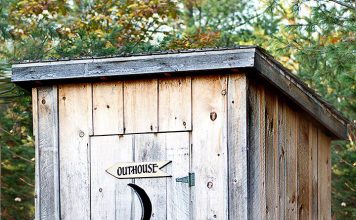| Issue #41 • September/October, 1996 |
Are you considering homeschooling your children, but don’t know where to start? The following 10 tips will help answer some of your questions.
Read, read, read
But don’t read too many “This is the way to teach your child” books. You’ll end up confused and convinced that you can’t do it. Instead, read a few “how-to” books and lots of books on world history, philosophy, religion, biology, psychology, literature, and other topics. If you don’t know where to start, go to the library and look up all the children’s books on the subject in which you’re interested. The children’s books will give you an overview, with easy-to-understand explanations that provide a base for more advanced learning.
Relax: You’re not having school-at-home; you’re homeschooling
Say the word “school” out loud. What’s the scenario that comes to mind? Desks. Chalk dust. A U.S. flag in the corner. Teacher up front, lecturing to sleepy students. Lockers slamming. Bells ringing. Boring.
“School-at-home” is an image that needs to be ditched, in favor of “homeschooling.” Rid yourself of the idea that having school means sitting at a desk in a stuffy room, taking notes for six hours a day while Mom lectures endlessly about history, biology, algebra, and French. When you homeschool, the emphasis is on “home.” Sitting on the sofa while you do math problems, studying insect life under a dead log in the back yard, asking questions in the car on the way to the library, reading Western biographies instead of dry history textbooks, and writing papers about the novels of Agatha Christie or the Titanic or motorcycles, instead of “What I Did Last Summer.” It is also playing with your brothers and sisters at recess, and wearing what you like to wear, not what the group says is “in style.”
Tailor the program to fit your child’s learning style
What kinds of activities does your child enjoy most? Does she count with blocks, love fingerpaint and modeling clay, enjoy taking apart and putting together Legos or other building toys? Does he enjoy being read to or listening to cassette recordings of storybooks? Or is she happiest curled up with a good book and silence all around?
People learn in all three ways: kinesthetic (by touching and handling things), auditory (by listening), and visual (including reading). Of course, children learn through all their senses, unless they’re physically disabled. However, since everyone tends to lean to one specific learning style, you can increase your child’s learning enjoyment by adapting the curriculum to fit his style.
Materials good for visual learners are workbooks, flash cards, matching games, instruction books, and charts. Good materials for auditory learners are verbal explanations, cassette tapes and CDs (recorded books), educational songs and rhymes, and rhythm instruments (for music class). For kinesthetic learners, try nature walks, model kits, gardening, puzzles, and typing instead of writing (faster and less frustrating).
Using your child’s learning style is especially helpful when you have to work through some of those sticky math problems. For a visual learner, try working out the problem on paper. An auditory learner may need only to have the problem read aloud. (My daughter asks for this help from time to time.) And a kinesthetic learner may need concrete objects (toothpicks, buttons) to stand in for the factors.
Try lots of stuff
How much would you pay for nine months at a private school? Probably $3500 and up. You don’t need to spend that much to teach your children at home, but you shouldn’t skimp, either. Education is at least as important as the amount you spent on Christmas last year, or on a trip to Disney World, or on a new Magnavox 31-inch television with a built-in VCR. If you set aside a specified amount for home school supplies at the beginning of the school year, you’ll feel freer to buy that set of art prints or those German language tapes than if you have to dip into the family budget.
Caution: Don’t buy anything you can’t return. Ideally, you should have your hands on the book or program before you pay for it. Ask yourself: Is this simple to use? Will this appeal to my kids? Does it appeal to me? (If it isn’t simple and/or appealing, you’ll use it for two or three weeks and then stash it in the closet, where it will haunt you forever.)
Write out your reasons for homeschooling and educational goals for each subject
Why do you want to teach your own children? Do you want to ensure their religious training, academic achievement, individuality, continuance of family/ethnic traditions? Are you simply crazy? (You will be asked this plenty of times, believe me.) When the rubber hits the road, you’ll need to have written-out reasons for taking on this more-than-full-time job, so you can read them often. That way, you’ll remember why you chose to keep your kids home when everyone else was merrily pushing theirs onto the big yellow school bus.
Educational goals should focus on outcomes. What do you want your child to be able to do as a result of having been taught this material?
Here are some of my goals for my two children:
· Language arts: Be able to use the fundamental skills of communication reading, writing, spelling, and grammarin a way that will enable them to function in our society (letters, conversation, job applications, essays, etc.).
· Social studies: Understand and be able to explain the major world systems (government, religious beliefs, culture) and how they developed (world history).
· Religion: Have respect and appreciation for human values and for the beliefs of others.
· Science: Understand and be able to explain the physical world as represented through basic knowledge of the sciences.
My list of educational goals also includes mathematical skills, perseverance, intellectual curiosity, physical and mental health fitness, and more. Your list of goals should cover those areas which are important to you and your family.
Sometimes it’s not fun
Nothing is fun all the time. Going to work isn’t always fun. (Sometimes it’s never fun, but that’s another article.) Running a household isn’t always my idea of a good time. And sometimes I’d rather dig in my garden than teach my kids.
Don’t get me wrong. Life should be enjoyable and fulfilling. Unfortunately, sometimes you have to slog through the hard parts in order to make way for the good.
If you’ve done all you can to make grammar fun and the kids still gripe, explain that even though it’s tough, an intelligent person must have a grasp of correct grammar. You can sweeten up the drudge with rewards along the way. For instance, I use index cards colorfully decorated with the words, “Coveted Candy Bar Card Redeemable for one candy bar,” to reward my kids for perfect papers. Or I give them something to look forward to, such as a “field trip” to an amusement park or campground after a particularly hard semester of schoolwork.
Face it, though. Some things are just not fun. They just have to be done. This is a lesson kids need to learn before they enter adulthood and have to write an annual report, cook dinner every evening, or stay up until 2 a.m. to meet a deadline.
Give it a year
One year of home education will not irrevocably harm your child, even if the only “schooling” you do is reading lots of books. (We’re talking here about a literate family who gets out to the library now and then.) On the other hand, after a year, you should be able to tell if home education has been a success for you and your kids.
Be generous in your judgment of “success.” Maybe your family has suffered a financial setback, death, illness, childbirth, or the like (in other words, normal life), and you’ve all had to pitch in to make it through tough times. In that case, “success” may mean a closer relationship between parents and children, and perhaps a talent discovered in carpentry, nursing, or clothing design. These family lessons are priceless and can only be taught at home, not in a public or private school setting.
Do unit studies
The beauty of a unit study is that the whole family can study a subject at the same time. You can take an armchair tour of a different European country every month, or follow the chronology of classical music throughout history. You may decide to take an in-depth look at Eastern religions for a semester. Or you can select a species of animal, research it, and then plan a field trip to its natural habitat. (See page 35: “A unit study on birds.”)
In a unit study, each family member works to the limit of his ability. For an activity on a unit study covering the Revolutionary War, first graders may make a model of a hornbook with the alphabet and numbers printed on it. Ninth graders may reenact the signing of the Declaration of Independence.
You don’t have to leave out the primary wage-earner when you do your unit study. Make posters charting the taxonomy of living things and hang them on the dining room walls. Plan an ethnically appropriate meal and have the kids cook and serve it. Watch a library video on Germany after dinner one evening.
Whatever you decide to do, set educational goals for your unit studies so specific skills are taught and assimilated. Give yourselves time to explore your chosen subject, and remember to keep it simple.
Give life skills equal status with academic skills
Driving a car. Planning and preparing a meal. Mowing the lawn. Re-shingling the roof. Sewing kitchen curtains. Balancing the household budget. These are life skills and, while we may think they don’t take a lot of brain power, life skills will most likely mean the difference between your child’s future independence or her ineptness. It’s extraordinary how much we worry about whether our children are learning biology, but then neglect to teach them the correct way to paint a room or a house, how to iron a shirt, how to cut or trim hair, or how to fix the toaster. Instead, we do these things ourselves or pay others to do them for us.
Make a list of life skills you’d like your kids to know before they leave your tender care. Teaching these skills not only helps the family now, but ensures that your kids will be able to take care of themselves later.
And the number one tip for home educators:
Enjoy yourself
Did you study the subjects you wanted to learn during your educational career? More important, do you remember any of it? My three years of French have withered away to one feeble chorus of “La plume de ma tante.” I have even less memory of my Algebra II class (except that the teacher pronounced the word “function” in a very interesting way). Now I’m learning German and taking guitar lessons. And algebra is more understandable without all the distractions I had in tenth grade.
Who says school is for kids only? Now’s your chance to listen to all of J.S. Bach’s works for organ, investigate the ecology of your part of the country, or read up on hot air balloons. There’s no limit to what you and your kids can learn when you have the freedom that home education brings.















there are kits that teach simple electric circuits like making a light bulb wire batteries ,switch with a bar switch soldering hooking up a trainset etc .in stead of tearing your toaster apart.